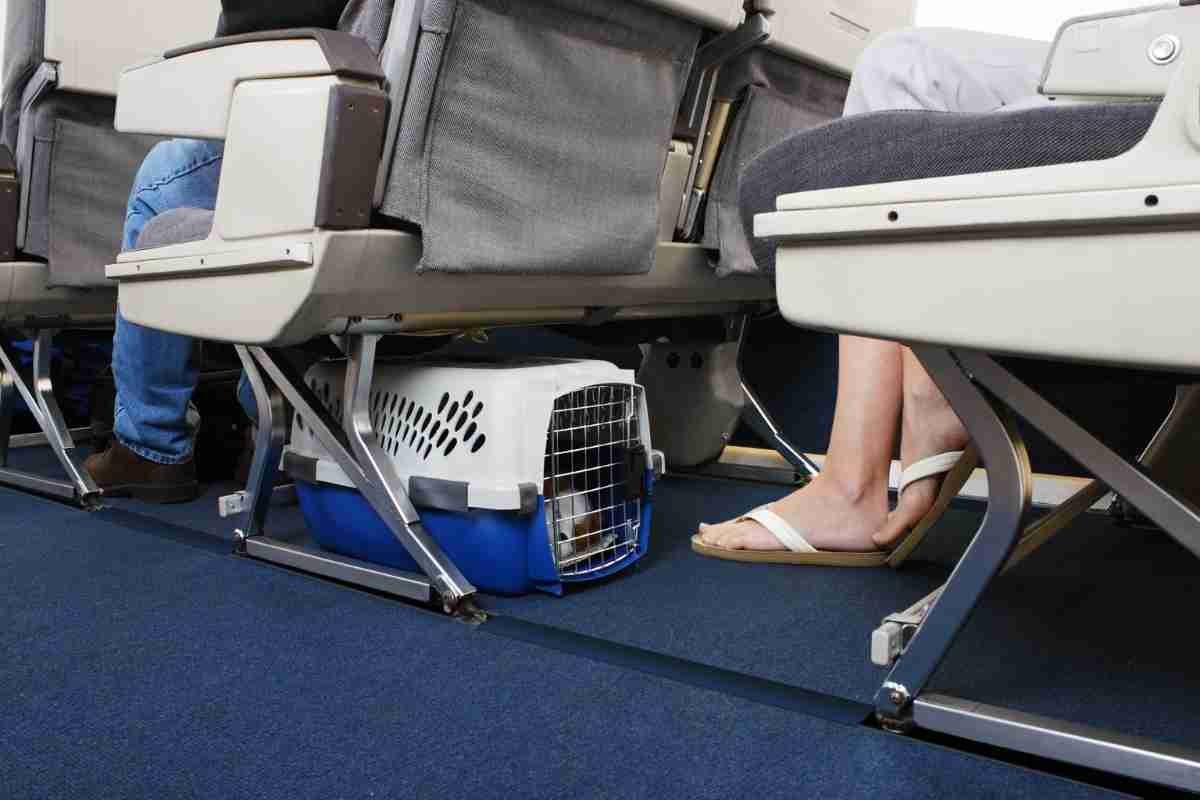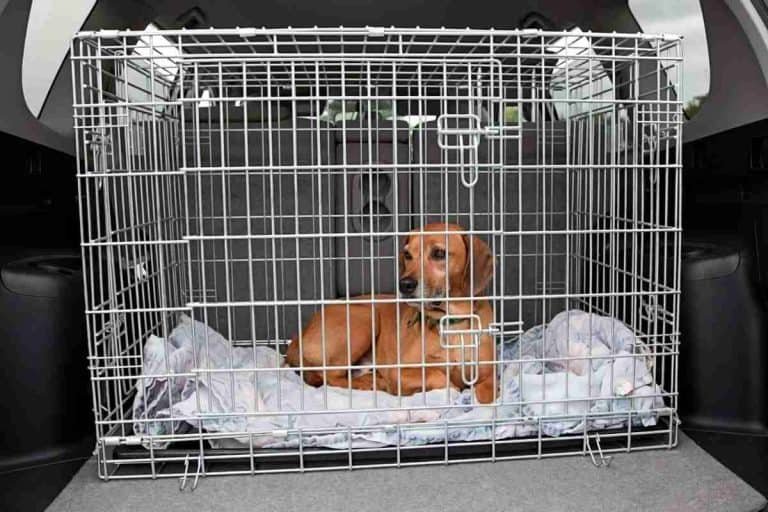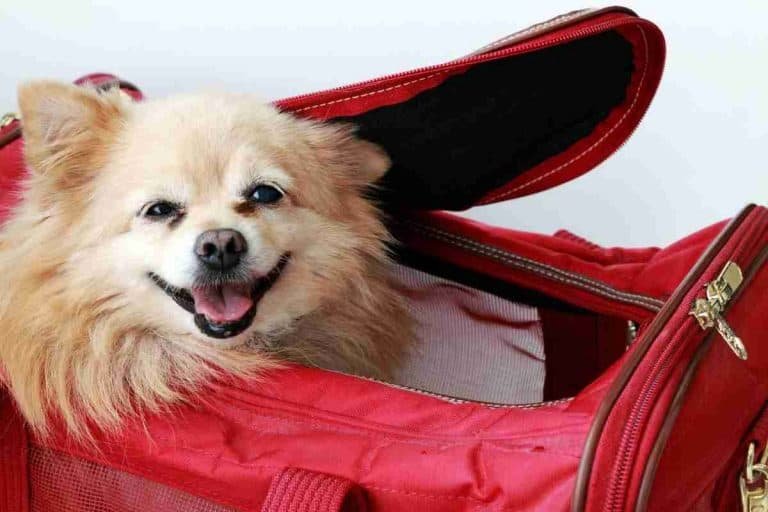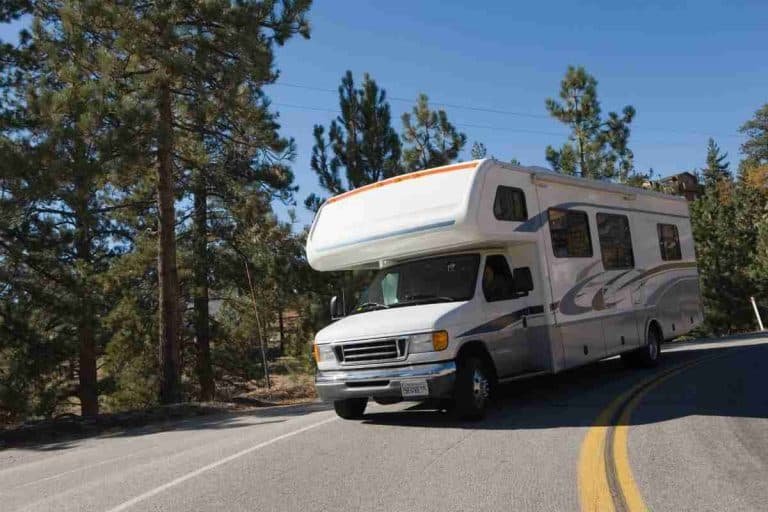10 Best Small Dog Breeds That Fit Under an Airplane Seat
Last Updated on August 30, 2025
10 best small dog breeds that fit under an airplane seat share key traits. Compact frames, calm temperaments, and practiced carrier manners top the list. Airlines expect an airline‑approved soft‑sided carrier that stays fully under the seat. They also set combined pet‑plus‑carrier weight limits. Details vary by carrier, aircraft, and route. Owners should verify dimensions, paperwork timelines, and brachycephalic restrictions before booking.
This guide shows how to pick a travel‑friendly breed and prepare for smooth in‑cabin flights. Find carrier dimensions, training and potty plans, TSA steps, and health‑certificate checklists. Then explore breed‑by‑breed notes on fit, barking, grooming, and comfort essentials. Continue to avoid last‑minute denials and keep trips calmer for everyone.
Airline size rules and what “fit under the seat” actually means
Airlines set cabin-pet rules to keep aisles clear and other passengers safe. Fit-under-seat means the carrier must remain fully under the passenger seat for the entire flight. Regulations vary by carrier, aircraft, and even by route. Owners should confirm dimensions, weight allowances, and whether the pet can briefly exit the carrier for security checks.
Typical carrier dimensions and common weight limits
Most U.S. and international carriers accept soft-sided carriers roughly 17–19 inches long, 10–12 inches wide, and 8–10 inches high. Weight limits commonly range from 15 to 20 pounds combined pet-plus-carrier. Smaller regional jets often require smaller carriers. Owners should review specific airline pages because allowances change seasonally and by aircraft type. For examples of carrier policies across airlines, see airlines that allow cats in cabin.
How airlines measure “under-seat” space and soft-sided carrier rules
Airlines measure the clear space from the floor to the lowest part of the seat in front and the seat-base depth. Soft-sided carriers get extra tolerance because they compress. Carriers must still provide ventilation, security, and full containment during taxi, takeoff, and landing. Crate choice matters: a flexible, breathable soft carrier often fits better than a hard crate. For carrier features and travel crate reviews, consult this guide to best dog crates for car travel.
Breed or health restrictions (brachycephalic, snub-nosed, aggressive breeds)
Airlines frequently restrict or require documentation for brachycephalic dogs. Short-nosed breeds face breathing risks in confined spaces and temperature changes. Some carriers prohibit breeds on aggressive lists or require muzzles. Vets may need to supply a travel health certificate within a narrow time window. For details on which carriers handle snub-nosed dogs and special policies, refer to airlines that allow snub-nosed dogs. Owners should verify restrictions and get veterinary clearance when needed.
CTA: Check the chosen airline’s pet policy and measure the carrier before booking.
What makes a dog breed travel-friendly for in‑cabin flights
A travel-friendly small dog combines a compact body, steady temperament, and predictable behavior. Airlines set carrier size and weight limits. Dogs that comfortably fit under an airplane seat within an airline-approved soft carrier reduce stress for the owner and other passengers. Health status matters: current vaccinations and a recent vet certificate often determine acceptance. Socialization and carrier habituation let a dog remain calm during security screening and crowded gates. Quiet breeds that tolerate confinement make the most reliable in‑cabin companions.
Practical factors owners should prioritize include leash manners, reliable recall at the gate, and the ability to eliminate on a schedule. Crate training before travel helps dogs accept the carrier as a safe space. Pack a compact travel kit: food, bottled water, a familiar toy, and absorbent pads. Check specific airline rules early, because some carriers limit breed types, carrier dimensions, or the number of pets per flight. For a concise guide to which dogs commonly travel in cabins, see dogs you can take on a plane.
Temperament and noise level: calm, quiet, adaptable dogs
Temperament ranks high when selecting a breed that must stay under a seat for hours. Calm, low-anxiety dogs tolerate confinement and unfamiliar sounds. Quiet breeds reduce the risk of complaints, re‑seating, or removal by airline staff. Owners should assess noise tendencies in real situations rather than relying only on breed stereotypes.
Preparation reduces barking and whining. Short practice sessions inside the carrier help a dog accept restriction. Incremental exposure to public noise and crowded spaces lowers reactivity. Reward-based training for quiet behavior, along with enrichment toys and chew-safe treats, fills idle time. For dogs that show persistent vocalization, owners should consult resources about managing plane-related noise, such as dog whining on plane.
When choosing among small breeds, prefer those that adapt to new routines. A predictable temperament also reassures fellow passengers and cabin crew.
Health and breathing considerations for air travel
Respiratory and cardiac health significantly affect in‑cabin suitability. Short-nosed, or brachycephalic, breeds face higher risk of breathing difficulty when stressed or overheated. Airlines vary on rules for snub-nosed dogs, and some require extra documentation or restrict travel during warm months. Consult airline-specific guidance before booking.
A preflight vet check should confirm fitness to fly and discuss hydration, feeding schedule, and safe medications. Sedation is generally discouraged because it can depress respiration and compromise balance during turbulence. Owners should ensure a stable body temperature by avoiding hot terminals and keeping the carrier ventilated.
For details on carrier and airline policies that affect short-nosed breeds, see airlines that allow snub-nosed dogs. If any health concern exists, obtain a travel-fit certificate and consider direct flights to minimize time in transit.
Age, potty training and energy level to consider
Age determines readiness for in‑cabin travel. Very young puppies usually cannot travel in cabin on many airlines. Seniors may have mobility or bladder-control issues. Owners must confirm age limits and required health forms before booking.
Potty-trained dogs handle long flights better. Schedule a full walk and outdoor elimination close to departure. Absorbent pads inside a carrier serve as backup, but frequent accidents increase stress for the dog and the owner. Train a dog to use pads during practice runs, so it understands where to relieve itself when outdoor breaks aren’t available.
Energy level influences how a dog copes with confinement. Low‑to‑moderate energy breeds settle faster. High-energy dogs need thorough exercise before check‑in and calming enrichment in the carrier. For practical guidance on managing toileting during flights, consult how do dogs go to the bathroom on a plane. Prepare a compact bathroom kit and a short preflight routine to improve success.
10 small dog breeds that commonly fit under an airplane seat
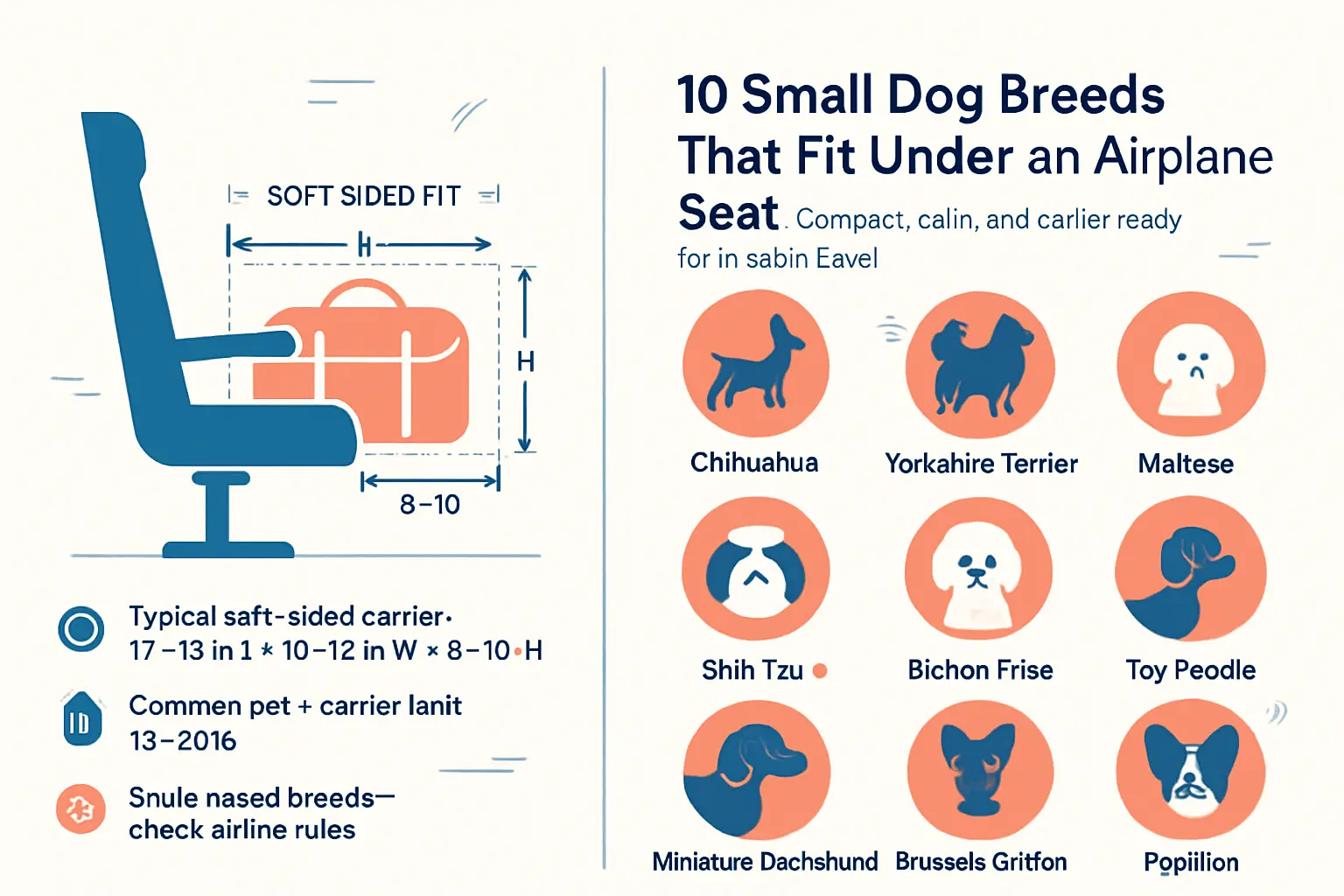
These ten breeds commonly meet most airlines’ in-cabin size limits. Each entry highlights realistic cabin fit, temperament in confined spaces, and practical carrier or grooming advice for flights. Owners should confirm airline dimensions and weight limits before booking. For general guidance on which dogs airlines typically accept, see dogs you can take on a plane. Packing a compliant soft-sided carrier and a familiar blanket reduces stress for short flights.
Chihuahua — size, average weight, why they’re ideal for cabins; carrier tip
Chihuahuas average 2–6 pounds and have compact frames that fit most under-seat requirements. Their small size makes them easy to secure in soft carriers that slide under seats. Choose a carrier with a rigid base to prevent sagging and a mesh panel for airflow. Because Chihuahuas can get chilly, add a thin blanket. Calm socialization before travel helps prevent nervous yapping during boarding and taxi.
Yorkshire Terrier — travel temperament, size notes, grooming tips for flights
Yorkshire Terriers usually weigh 4–7 pounds and handle cabin travel well when trained. They can become anxious if unfamiliar with crowds, so short acclimation trips in the carrier help. Trim hair that obstructs ears and eyes before travel to reduce irritation. Light brushing and using a calming pheromone wipe can keep the terrier comfortable during longer waits. For travel anxiety solutions, consult natural calming options like those listed in 9 natural ways to remedy your dog’s travel anxiety.
Pomeranian — compact dimensions, barking management, airline reminders
Pomeranians are small but fluffy, typically 3–7 pounds. Their dense coat makes them look larger than they measure, so owners should use a carrier that compresses slightly to meet airline height limits. Pomeranians may bark when stressed; conditioning with short flights and reward-based quiet training reduces incidents. Review airline rules on noise and carrier fit before travel. Practical guidance about managing barking on planes appears in what happens if my dog barks on a plane.
Maltese — calm disposition, coat management and carrier comfort
Maltese dogs often travel well because of their gentle temperament and light weight, usually 4–7 pounds. Keep long coat hair tied or tucked to avoid tangles in the carrier. A carrier with soft sides and a removable, washable pad enhances comfort. Owners should practice short confinement sessions so the Maltese associates the carrier with rest. Pack grooming wipes and a small brush to freshen the coat before boarding.
Shih Tzu — size and brachycephalic cautions; when to avoid flying
Shih Tzus fit most carriers at 9–16 pounds, though many individual dogs are lighter. Their brachycephalic faces increase heat and respiratory risk, so avoid hot or turbulent conditions. Airlines vary in rules for snub-nosed breeds; check specific carrier policies and restrictions first. If a Shih Tzu has breathing issues, postpone air travel and consult a veterinarian. More on carrier and airline rules for flat-faced dogs is at airlines that allow snub-nosed dogs.
Bichon Frise — friendly temperament, shedding considerations, seat-fit tips
Bichon Frises weigh 7–12 pounds and bring an even temperament that calms neighbors. Their curly coat sheds minimally but mats without care. Choose a carrier tall enough to let the dog sit easily, but compressible enough to fit under most seats. Include a non-slip pad so the dog stabilizes during taxi. Plan a short walk before heading to the airport to minimize in-carrier restlessness. For travel bathroom and cleanup planning, review general pet travel bathroom practices.
Toy Poodle — trainability for confined spaces and grooming/space advantages
Toy Poodles weigh 4–6 pounds and quickly learn confined-space etiquette. Their intelligence makes carrier training straightforward; teach a reliable settle cue. Clipped coats reduce overheating and save space inside carriers. A compact, well-fitted carrier lets a toy poodle change positions comfortably. If trains or multi-mode travel follow the flight, the poodle adapts easily; see tips for traveling by train with a dog at traveling with your dog by train: tips and tricks.
Miniature Dachshund — body shape, comfort in carriers and movement tips
Miniature Dachshunds measure long with short legs, usually 8–11 pounds. Choose a carrier with sufficient length so the dog can lie stretched. Avoid carriers that force the back into awkward curvature. Place a low, supportive pad to cushion the spine during turbulence. Frequent, brief carrier sessions before travel help dachshunds accept confinement. For vehicle-secure handling and comfort tips, consult resources like how to secure a dog in the cargo area of an SUV.
Brussels Griffon — compact build, temperament for travel and carrier advice
Brussels Griffons usually weigh 6–12 pounds and bond closely with owners, which helps calm them on flights. Their compact chests and relatively short legs fit many carriers well. Use a carrier with breathable mesh for ventilation and a breathable top to reduce claustrophobia. Practice windowless carrier time to avoid motion-triggered whining. For guidance on calming noisy travel behavior, see resources about whining on planes at dog whining on plane.
Papillon — light weight, calm energy, ideal carrier styles
Papillons weigh 4–9 pounds and combine light weight with moderate energy. They tolerate confinement if given a preflight walk and a familiar toy. Carriers that allow the dog to sit upright and peek out the mesh top work best. For midflight needs, plan quick restroom and stretch opportunities before security. Owners concerned about on-board potty management can reference practical tips on how dogs handle bathroom needs during flights at how do dogs go to the bathroom on a plane.
How to prepare your dog for a smooth in‑cabin flight
Preparation reduces stress for both dog and owner. Start by confirming airline rules, size limits, and any required paperwork. Measure the dog from nose to tail and from shoulder to floor to ensure the carrier fits under the airline seat. Schedule a preflight wellness check and any required vaccinations or health certificates. Pack a compact travel kit with leash, waste bags, a few favorite treats, a familiar blanket, and absorbent pads. Create a travel timeline: light exercise, final potty break, and a calm 30–60 minute wind‑down before heading to the airport. Maintain routine feeding times in the days before travel to avoid digestive upset. Book early boarding when available and notify gate staff that a pet travels in cabin. Monitor airline temperature and seasonal rules; some carriers limit pets in extreme heat or cold. For more gear ideas and broad travel guidance, consult essential dog travel tips and gear for road trips. CTA: confirm the chosen flight’s pet policy before buying tickets to prevent last‑minute denials.
Choosing and breaking in the right airline‑approved carrier
Pick a carrier labeled airline‑approved and confirm dimensions with the specific airline. Soft‑sided carriers compress slightly to fit under seats while still providing ventilation. Measure the dog standing and curled to choose the right interior space. Look for secure zippers, reinforced bottoms, mesh panels for airflow, and a leak‑proof liner. Break the carrier in at home: place the dog’s bed or blanket inside and leave the door open for exploration. Gradually close the door during short reward‑based sessions. Run a checklist before travel: accurate dimensions, a collar tag with contact details, and a familiar scent inside. Consider a carrier with top access for easy placement during security checks. For comparison and crate options suited for vehicle travel that adapt well to flights, see best dog crates for car travel in 2023.
Carrier training: crate acclimation, short practice trips, airport noise exposure
Train the dog to view the carrier as a safe den. Start with short, pleasant sessions of five to ten minutes. Reward calm behavior with treats and praise. Gradually extend sessions to an hour, then place the carrier in the car for short drives. Mimic airport stimuli by playing recordings of terminal announcements and crowd noise at low volume. Increase volume slowly while the dog remains relaxed. Practice passing through security lines at quiet times and visiting a local busy area to build tolerance for crowds and smells. Use positive reinforcement only; avoid forcing the dog inside. If the dog displays persistent anxiety, document behaviors and timing to discuss with a trainer or veterinarian. For natural calming strategies and anxiety remedies to pair with training, consult 9 natural ways to remedy your dog’s travel anxiety.
Meals, potty plans and exercise before travel
Plan meals to minimize stomach upset. Offer a light meal four to six hours before departure; skip feeding within two hours of travel. Provide fresh water up to boarding time to prevent dehydration. Exercise the dog vigorously an hour or two before leaving for the airport to burn excess energy. Schedule a final potty break right before check‑in and again at predeparture pet relief areas. Pack extra waste bags, a portable water bottle, and an absorbent pad for unexpected delays. For longer layovers, research airport pet relief locations or nearby outdoor areas in advance. If flying internationally, check destination rules for importing pets and required quarantine stops. Practical guidance about where dogs relieve themselves during flights and at airports appears at how do dogs go to the bathroom on a plane.
Safe calming methods and when to consult a vet about medication
Start with nonpharmacologic calming aids. Use a Thundershirt or snug wrap, pheromone sprays, and long‑lasting chew treats. Provide familiar items that smell like home. Behavioral conditioning and short practice flights reduce the need for medication. Consult a veterinarian when anxiety causes drooling, vomiting, escape attempts, or aggressive behavior. A vet can recommend safe options, including short‑acting prescription anxiolytics or antiemetics, and advise on dosing relative to weight and breed. Avoid giving over‑the‑counter human sedatives without veterinary approval. Discuss potential side effects, interactions with other medications, and any respiratory risks, especially for brachycephalic breeds. For tips on handling vocal stress and other in‑flight behaviors, see dog whining on plane.
Paperwork, vet checks and airport procedures you must know
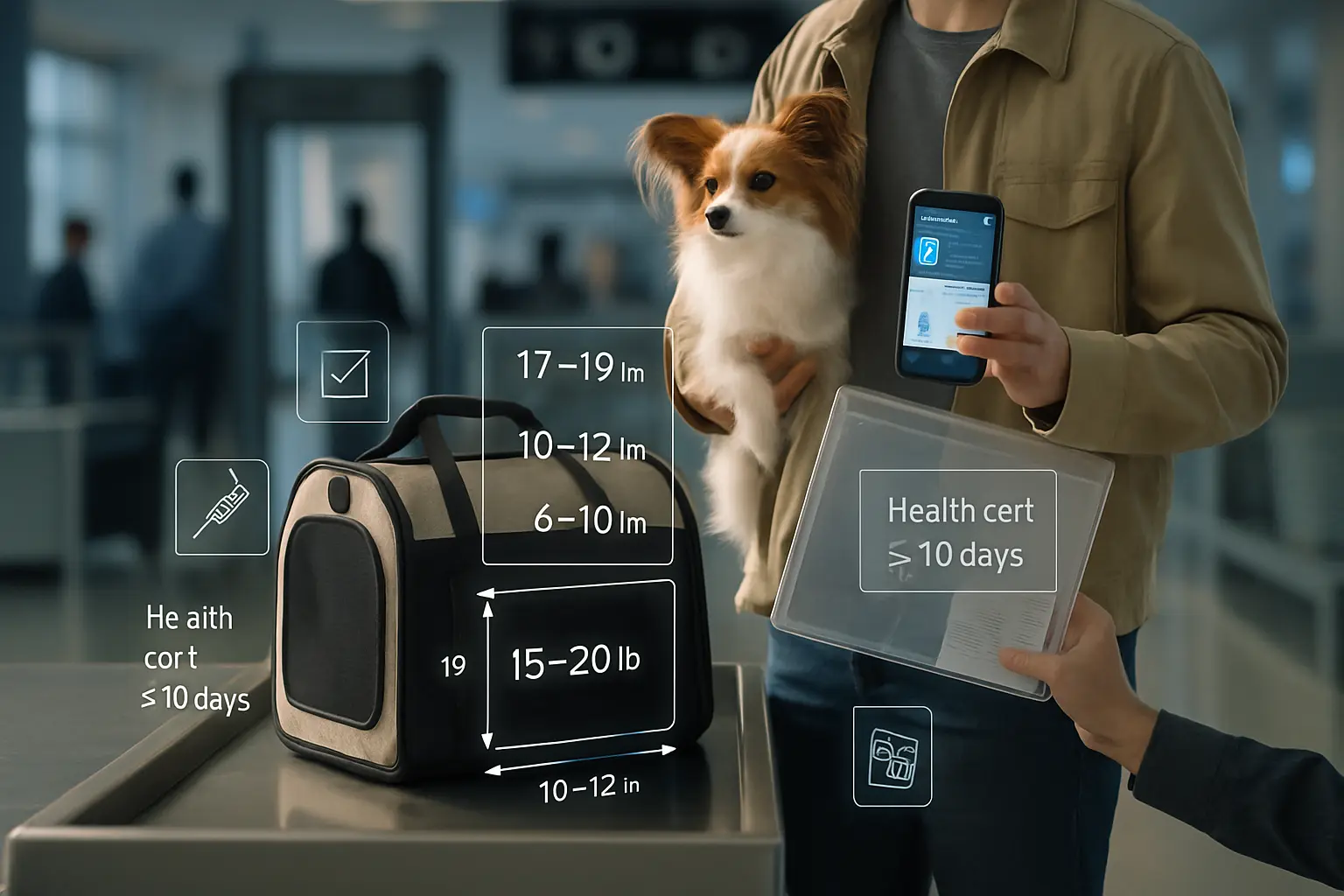
Traveling with a small dog under an airplane seat requires organized paperwork and smooth airport routines. Owners should verify airline size and weight limits, confirm carrier dimensions, and reserve a cabin spot well before departure. Bring originals and photocopies of all documents during travel: vaccination records, health certificate, microchip paperwork and proof of ownership.
Pack a dedicated travel folder and keep digital copies accessible. At check-in, present documents even when online check-in is complete. Arrive earlier than usual to allow time for document review and any last-minute vet confirmations. Prepare the dog by acclimating it to the carrier and practicing short trips.
For extra travel tips on gear and preparation that apply to air travel, consult essential dog travel tips and gear for road trips. Confirm rules and timelines with the airline and the destination’s authorities to avoid disruptions, and consider a pre-flight veterinary visit within the airline’s required health-certificate window.
Required vaccinations, health certificate timelines and microchipping tips
Most airlines require an up-to-date rabies vaccination and a general health certificate issued by a licensed veterinarian. Timelines vary: many carriers accept certificates completed within 10 days of travel, but some destinations mandate longer windows. Contact the airline and destination authorities to verify exact timing.
Other recommended vaccines include distemper and bordetella, depending on the dog’s exposure risk. Keep original vaccination cards and digital scans. When traveling internationally, some countries require a rabies titer test completed weeks before export.
Microchipping helps reunite lost pets. Use an ISO 11784/11785 compatible 15-digit microchip when possible. If the chip uses a different standard, carry documentation and the chip manufacturer’s code. Update microchip registration with current contact details and list travel destinations on the account.
For guidance on breeds and airline acceptance that intersect with documentation needs, see dogs you can take on a plane. Schedule all vet appointments early to meet certification deadlines.
Airline check-in, security screening procedures and boarding etiquette
Check-in rules differ by carrier. Confirm whether the airline requires online check-in, a counter visit, or an additional fee at the gate. Reserve the carrier space on the flight; having a booking that lists a pet helps avoid surprises at boarding.
At security, Transportation Security Administration (TSA) policies commonly require removing the pet from its carrier and carrying it through the metal detector while the empty carrier goes through the X-ray. Keep a harness or leash readily available and a shoulder strap or tote for the carrier.
During boarding, place the carrier under the seat in front of the traveler and keep the dog inside for the entire flight. Offer a small treat, a familiar blanket, and an absorbent pad. Avoid opening the carrier in crowded areas. Quiet behavior matters: excessive barking can draw attention or lead to crew intervention; review airline policies about disruptive animals beforehand.
For specifics on handling in-flight barking and crew expectations, reference what happens if my dog barks on a plane. Keep interactions calm and respect fellow passengers’ space.
International travel: passports, export certificates and quarantine basics
International moves require more documentation than domestic flights. Many countries accept a national pet passport or a stamped health certificate endorsed by an official veterinary service. The United States uses USDA APHIS endorsements for certain exports; other nations use import permits or certificates specific to the destination.
Some countries require a rabies titer test, done at least several weeks before departure. Others impose quarantine on arrival. Research the destination’s entry rules, quarantine lengths and approved veterinary labs early. Book any required blood tests, titer processing, and endorsement appointments well ahead of travel dates.
Arrange logistics like approved carriers, climate-controlled flights, and certified export paperwork. Airlines differ on accepting animals in cargo versus cabin; verify allowable routes and documentation with the carrier. For more on airline options for transporting pets in cargo and related policies, see airlines that allow dogs in the cargo.
Start international paperwork months in advance. That preparation prevents last-minute denials and ensures compliance with import rules and quarantine requirements.
Day‑of-flight care, in‑flight best practices and emergency steps
How to position the carrier, keep your dog comfortable and monitor breathing
Place the carrier fully under the seat in front of the passenger so it cannot shift during taxi, takeoff or landing. Use a soft-sided, airline‑approved carrier with firm bottom so the dog can lie flat. Line it with an absorbent pad and a small familiar blanket to reduce stress. Keep the carrier oriented so the dog’s chest is not compressed and the head can turn freely. Check breathing visually every 15–30 minutes by watching flank rise and fall. Pale or blue gums, rapid shallow breaths or repeated gagging require immediate attention. Avoid sedatives unless a veterinarian prescribes them; they can impair breathing at altitude.
Handling delays, layovers and sudden weather or airline policy changes
Expect delays and prepare an in‑flight kit: sealed water, small food portions, extra absorbent pads, travel leash and calming chews if approved by a vet. For potty planning, review methods ahead; see practical guidance on how dogs go to the bathroom on a plane. Keep paperwork and vaccination records handy to respond to gate agents or last‑minute policy shifts. If a layover extends, locate airport pet relief areas or request permission to use a quiet terminal hallway for a short break, keeping the dog leashed and under control.
Recognizing signs of distress and immediate steps to take
Watch for excessive panting, whining, drooling, collapse, or altered gum color. If mild, speak calmly, offer water, and open carrier slightly if the crew permits. Alert flight attendants immediately for any breathing problems or severe signs. If the crew cannot resolve the issue onboard, request priority landing or medical assistance upon arrival. Keep emergency contact numbers and the nearest veterinary clinic for the destination accessible. A prepared emergency kit and clear communication with crew reduce risk and speed response.
Options if your dog can’t fly in the cabin
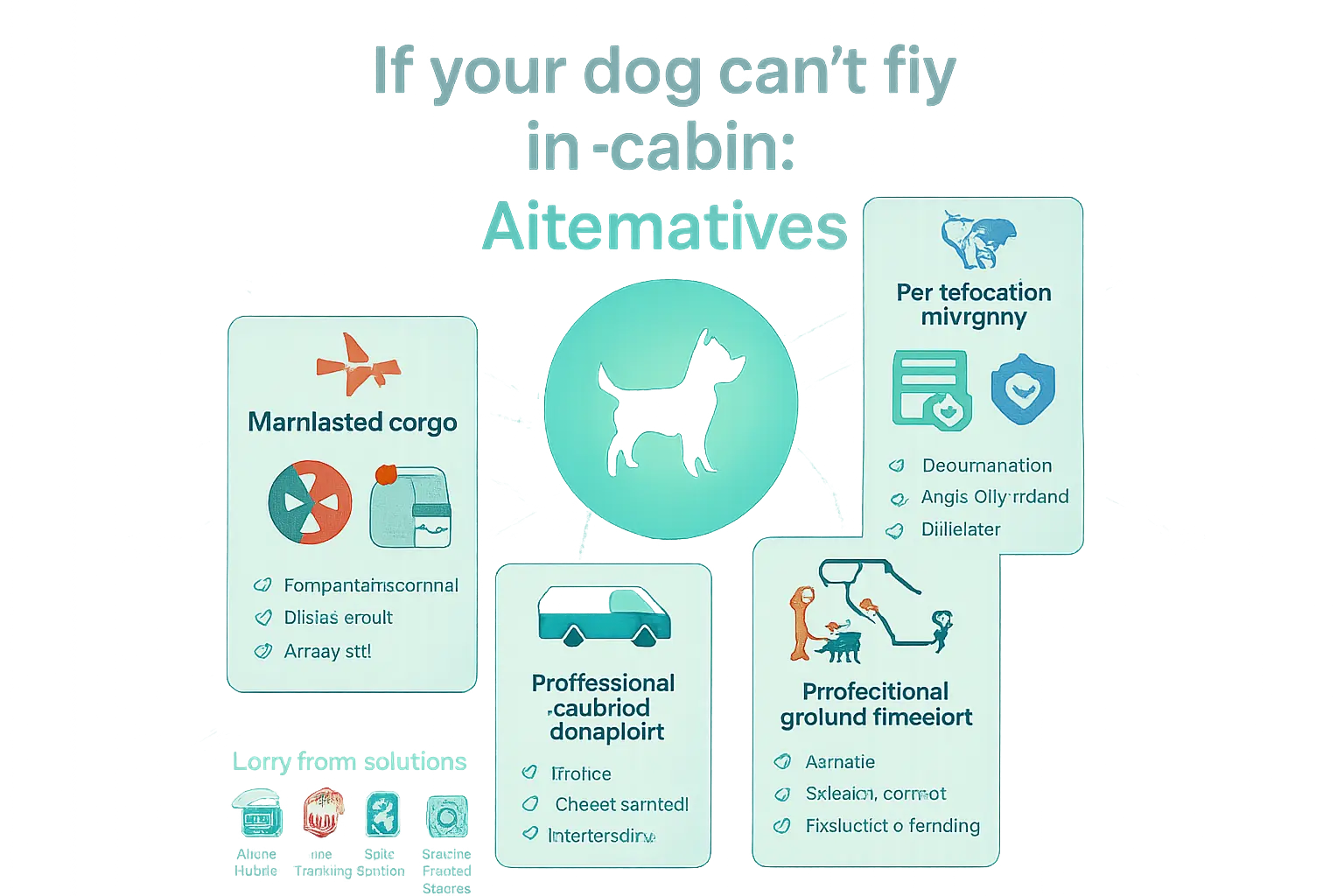
When a small dog exceeds an airline’s cabin limits or the carrier bans the breed, owners must choose alternatives that maximize safety and minimize stress. Typical paths include manifested cargo, specialized ground transport, or hiring professional relocation firms. Each option carries distinct risks, costs, and scheduling trade-offs. Owners should compare temperature-controlled routes, documentation requirements, and emergency procedures before booking. Preparing the dog with crate training and updated health paperwork reduces complications.
Decisions should prioritize the dog’s health, temperament, and travel frequency. Short trips may favor ground transport. Long-distance moves often rely on vetted cargo services or relocation specialists. Ask providers for references, photos of past shipments, and written protocols for delays or medical incidents.
Safer cargo/manifested pet travel vs. ground transport services
Manifested cargo moves pets on a documented airline manifest, not as loose cargo. It offers direct flights and professional handling, but it exposes dogs to airport environments and weather. Ground transport keeps pets closer to handlers and avoids pressurized holds. Professional ground carriers reduce stops and provide climate control. Compare timelines, vehicle standards, and driver training. For airline cargo policies and carrier lists, see Airlines that allow dogs in the cargo.
Professional pet relocation companies and insurance considerations
Relocation companies coordinate logistics, paperwork, and veterinary clearances. Vet firms for licensing, experience with manifested shipments, and whether they provide live tracking. Insist on written liability limits and ask about emergency medical coverage. Verify refund and rebook policies for weather or mechanical delays. For practical packing and trip planning advice that complements relocation services, consult Essential dog travel tips and gear for road trips.
Long‑term solutions: training, weight management or choosing a different breed
Long-term choices prevent future travel barriers. Implement a crate-training plan and desensitization to carrier noises. Work with a vet on safe weight loss when size limits cause cabin denials. If frequent flying is essential, consider adopting a consistently airline-friendly breed. For behavioral and anxiety remedies to help dogs tolerate travel, review 9 natural ways to remedy your dog’s travel anxiety.
CTA: Owners should request written policies and quotes from at least two providers before committing to any transport option.
Summary
This guide explains what “fit under the seat” means across airlines, the carrier sizes and weight limits that typically apply, and the traits that make a small dog a reliable in‑cabin traveler. It highlights ten small breeds that commonly meet cabin rules—along with breed‑specific tips—and outlines step‑by‑step preparation, paperwork, and day‑of‑flight protocols to keep trips safe and low‑stress.
Owners learn how to select an airline‑approved soft carrier, train for calm behavior, plan meals and potty breaks, and navigate TSA screening and boarding etiquette. The guide also covers health and brachycephalic considerations, plus practical alternatives if a dog cannot fly in the cabin. Action step: confirm the airline’s pet policy and measure both dog and carrier before booking.
Key Takeaways
- Know the rules: Most carriers allow soft-sided carriers around 17–19″ L x 10–12″ W x 8–10″ H and a 15–20 lb combined pet‑plus‑carrier limit, but policies vary by airline, aircraft, and season—verify before purchasing tickets.
- Pick travel‑friendly dogs: Compact size, calm temperament, good health, and prior carrier training matter most; brachycephalic dogs need extra caution and airline approval.
- Top small breeds for cabins: Chihuahua, Yorkshire Terrier, Pomeranian, Maltese, Shih Tzu (with snub‑nose precautions), Bichon Frise, Toy Poodle, Miniature Dachshund, Brussels Griffon, and Papillon—each with specific carrier and grooming tips.
- Prepare early: Break in the carrier, desensitize to airport noise, schedule a vet check, serve a light meal 4–6 hours pre‑flight, exercise before check‑in, and plan potty breaks and pads.
- Paperwork and procedures: Carry rabies/vaccine records, a timely health certificate, and microchip details; expect to remove the dog at TSA while the empty carrier is X‑rayed; keep the dog inside the carrier for the entire flight.
- If cabin won’t work: Compare manifested cargo and professional ground transport, vet providers, and request written policies and coverage details.
FAQ
- What carrier size usually fits under an airplane seat? Most airlines accept soft-sided carriers around 17–19 inches long, 10–12 inches wide, and 8–10 inches high. Always confirm exact dimensions for the specific airline and aircraft.
- How do airlines calculate pet weight limits? Many set a combined limit for the pet plus carrier, commonly 15–20 pounds. Owners should check the carrier’s empty weight and verify the airline’s current policy.
- How should a dog be measured for carrier fit? Measure nose‑to‑base of tail and floor‑to‑shoulder, then choose a carrier that allows the dog to stand, turn, and lie down; soft sides provide slight compression under seats.
- Why are brachycephalic breeds sometimes restricted? Short‑nosed dogs face higher respiratory risk under stress or heat. Airlines may limit routes, seasons, or require health documentation to reduce safety concerns.
- How can owners reduce barking or whining during flights? Use gradual carrier training, noise desensitization, a pre‑flight exercise routine, and approved calming aids; bring a familiar blanket and long‑lasting chew to encourage settling.

